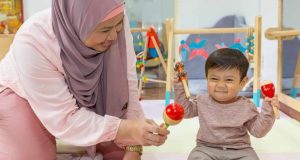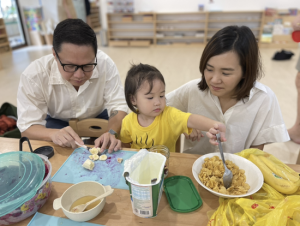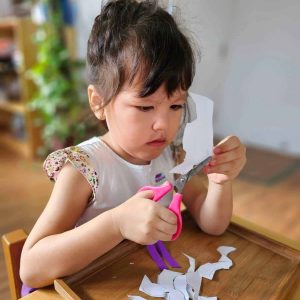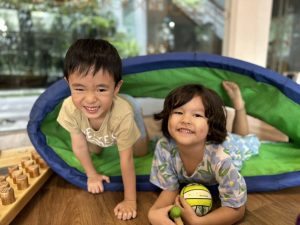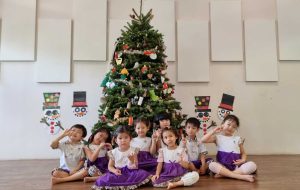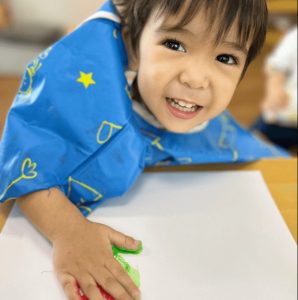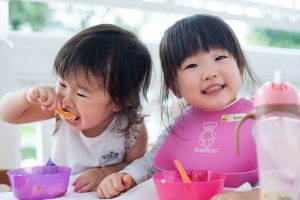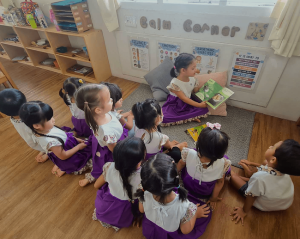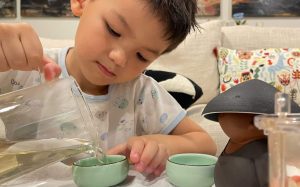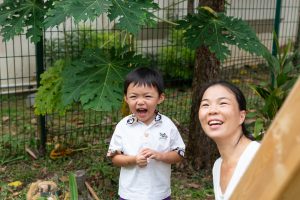
Keep Calm and Help Children Learn
4 Beautiful Locations Islandwide At House on the Hill, we strive to embody the true Montessori method and philosophy in every lesson and activity. Book A Tour Keep Calm and Help Children Learn Calm and peaceful parenting is a distinctive positive approach in which the aim is to promote harmony and respect in a family’s daily life. This method places emphasis on less conflict and creating more cooperation by understanding the root cause of children’s behaviour. By teaching children to be calm, we need to role-model calmness ourselves. Most of what children learn about emotions comes from us. How we respond to our own worries, stress and frustrations will guide the children to learn to manage different everyday experiences and challenges. As you experience challenging emotions and situations, demonstrating how you bounce back will help your child relate better to respond to their own issues with optimism, calmness, and confidence. Calmness helps reduce children’s “alarm reaction” (fight-flight-freeze) and allows them to feel safe and secure enough to think rationally and learn a better way of behaving and coping while building trust. When your child is calm, they will have more focus and concentration to be more engaged in activities they are interested in. Consistency is also critical. It’s what sets the tone and will immediately put your child at ease in their environment. Children need to feel safe to learn Children need to be given the right environment for learning. Our Teachers at House on the Hill have adopted the approach of calm and consistent Montessori environments, recommending a balance between intentional and child-led learning, in an environment that is safe and predictable. Montessori environments are structured differently than classrooms in traditional preschools and childcare centres. The method integrates practices that lean into children’s natural tendencies, weaving classroom and behavioural management into regular, everyday practices. “To understand the children’s behaviour, we need to know the trigger or functional need of the child to feel and behave the way they do. We provide them with the safe environment to express their feelings and make them feel validated”. “By acknowledging their feelings, we help them to relate to their big emotions and let them feel connected with us. We continue to describe and talk about their situation to address their functional need and provide solutions for them to support them”. Ms Marilyn Ow, Founding Principal of House on the Hill Central to this approach is having a predictable and consistent environment that facilitates the development of your child. Helpful Tips For Keeping Calm Environments Importance of Calmness: Children learn by example: Adults need to model calmness to teach children how to manage their own emotions. Calmness promotes learning: When children feel calm, they are more receptive to learning and problem-solving. Calmness fosters trust and security: A calm environment helps children feel safe and secure, essential for learning and development. Montessori Approach: Balance between structured and child-led learning: This provides children with both opportunities for exploration and guidance. Predictable and consistent environment: Helps children feel safe and secure, allowing them to focus on learning. Modelling appropriate behaviour: Adults demonstrate how to interact effectively, manage emotions, and solve problems. Tips for Creating a Calm Environment: Stay calm yourself: Recognize your stress triggers and take steps to de-escalate. Establish routines: Consistency reduces anxiety and creates a sense of security. Practice self-regulation: Children learn to self-regulate by observing calm and consistent adults. Be patient and understanding: Respect children’s capabilities and avoid placing unrealistic expectations. Let go of small issues: Focus on what truly matters and avoid creating unnecessary tension. Teach children coping mechanisms: Help them understand and manage frustration in a healthy way. Open communication: Discuss emotions openly and help children learn to express themselves constructively. By incorporating these principles, parents and Teachers can create a calm and nurturing environment that fosters children’s emotional well-being and learning.


